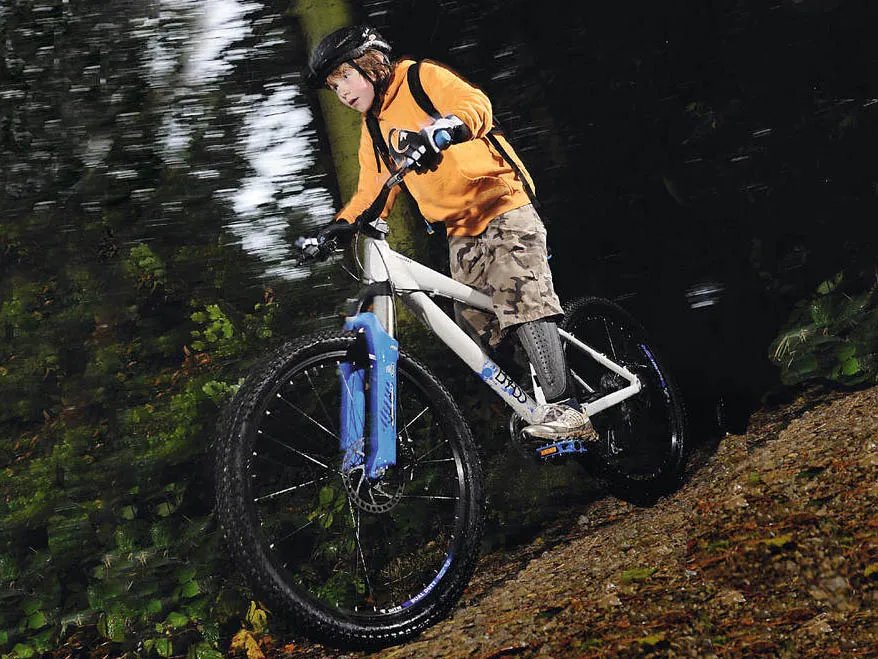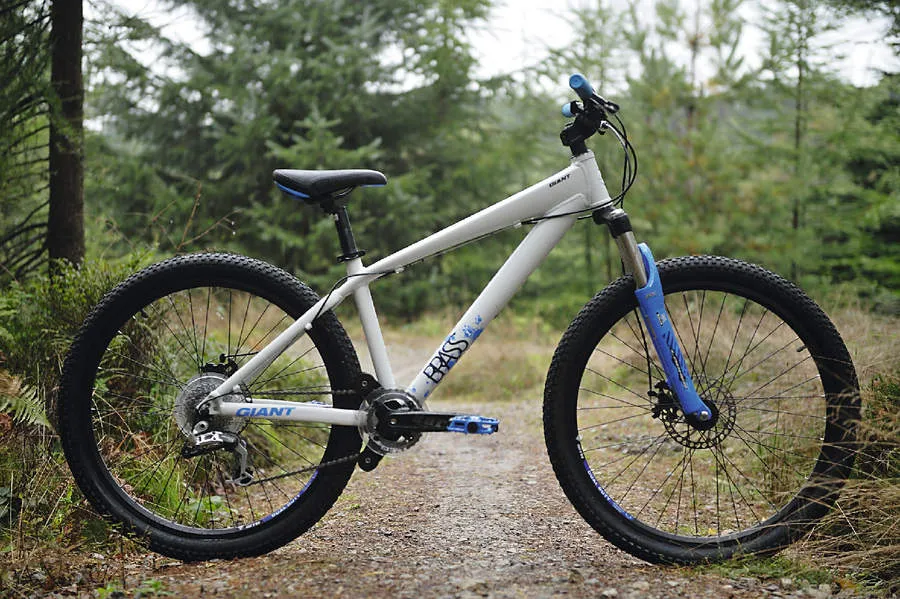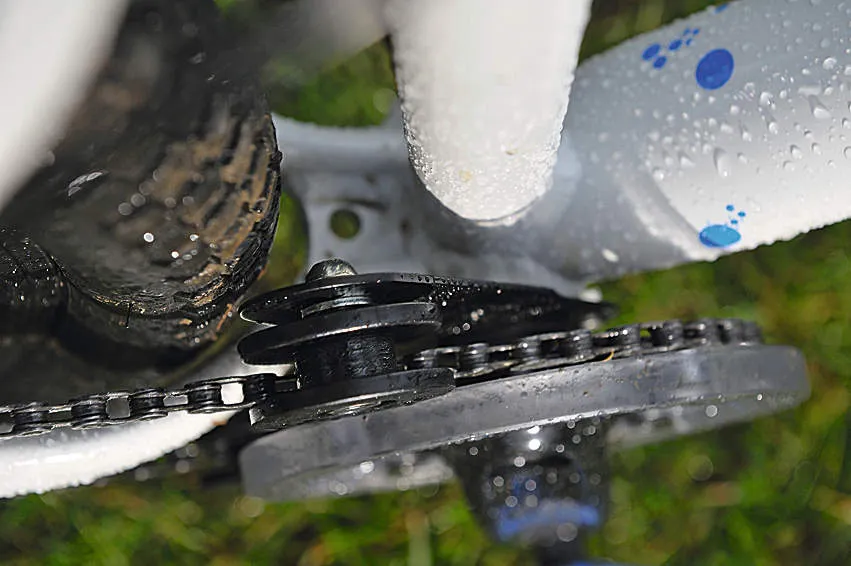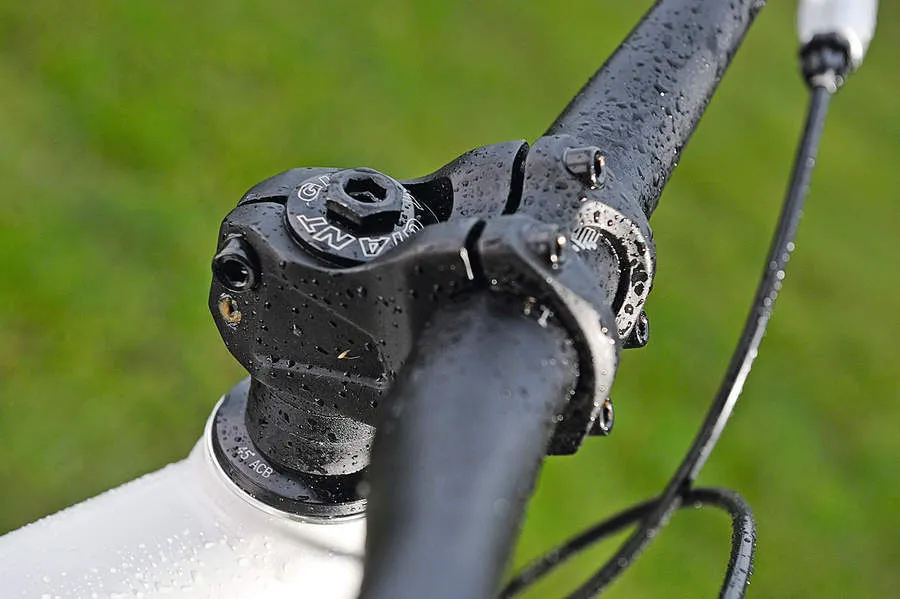The Giant Brass shows the influence of Giant’s STP dirt jump bikes in a package that’s tough, but too hefty for general off-road use. This is an urban mountain bike in the ‘riding along park benches in baggy jeans’ sense.
Ride & handling: steady but hefty
The Brass’s high bottom bracket and even longer cranks make for knees-around-the-ears pedalling when seated.
Kids’ bikes need to multi-task and a dirt jump bike will readily go down trails, given the right tyres.
Wide bars and a short stem provide power steering, the slack head angle is good for descending and it’s built to land drops.
But your kid will find going up is harder because of the bike’s 35lb heft.
For a young teen, that’s far too heavy and our tester struggled on every climb. “Good fun on a dry jump park,” he said, “but not for a wet cross-country course.”
That heft places the Brass firmly in street corner and jump park territory.
Frame: dirt-jump beefy
It’s a small-framed adult’s bike rather than a kids’ bike per se, but a dirt jumper has plenty to recommend it to young teens (suggested age is 12 and up).
The riding position is shorter and more upright than most young-adult hardtails, while a short seat tube gives good standover clearance and plenty of growing room.
The front end gets its stiffness and strength from fat tubes with walls thick enough that they won’t crumple like a drink can when the bike gets stacked.
However, the rear triangle is tight and there’s no cross-brace for the short chainstays, so the big tyre almost brushes them – leaving little mud room.
Equipment: jump-park ready
The RST Launch RA is a jump-specific fork with 32mm steel stanchions, fixed hydraulic damping and heft.
It’s adjustable for rebound and preload, yet on any setting its high stiffness means that your child gets a tooth-rattling ride and uses only a fraction of the fork’s 100m travel.
The wheels are reinforced with extra spokes – 36 rather than 32. It’s a useful precaution for a bike that will get airborne or ridden down steps. They’re shod with big-volume tyres and tread designed for hardpack or concrete.
Gearing is a single chainring with an eight-speed cluster. This simplifies gear selection, which is handy on a kid’s bike where the default chain position is small chainring, small sprocket. It costs some climbing gears at the bottom end, but having a bashring instead of an outer ring helps to prevent puncture wounds.
There’s also a chain guide to keep the chain from misbehaving, which is handy for this bike’s chosen market.



